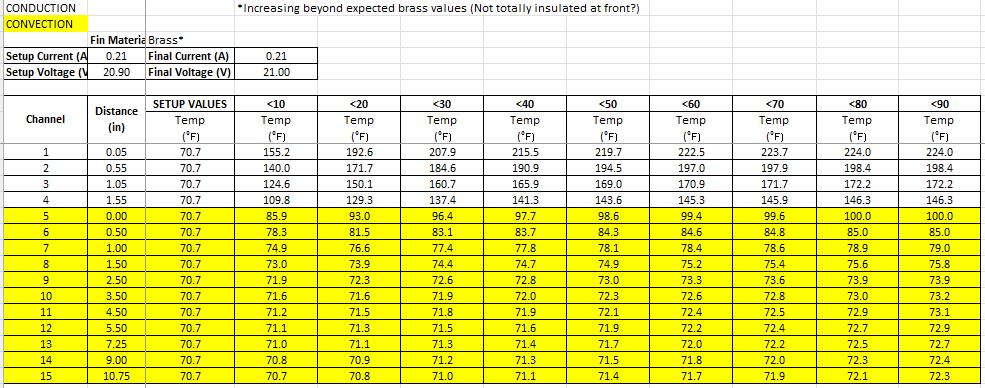Answered step by step
Verified Expert Solution
Question
1 Approved Answer
1. Determine whether or not the cylinder can be modeled as an infinite fin -- (use experimental observations to support conclusions made). 2. Find the

- 1. Determine whether or not the cylinder can be modeled as an infinite fin -- (use experimental observations to support conclusions made).
- 2. Find the temperature slope (DT/Dx) for the first 4 TCs and compute heat conduction through the fin stem [q = - k A (DT/Dx)].
- 3. Compare the thermal flux "q" result obtained in Step 2 with the electrical power consumed by the power supply to make heat. Is there a difference? Explain the reason.
- 4. Plot the natural logarithm of dimensionless temperature ratio "q" versus position x.
- 5. Calculate the convective heat transfer coefficient "h".
- 6. Based on the computed h value, evaluate the fin heat transfer rate from Equation 5.
- 7. Compare this value with the data obtained in Step 2 and the electrical power consumption used to create the heat at the power supply; explain the differences.
CONDUCTION CONVECTION *Increasing beyond expected brass values (Not totally insulated at front?) Fin Materia Brass Setup Current (A Setup Voltage (V 0.21 20.90 Final Current (A) Final Voltage (V) 0.21 21.00 SETUP VALUES
Step by Step Solution
There are 3 Steps involved in it
Step: 1

Get Instant Access to Expert-Tailored Solutions
See step-by-step solutions with expert insights and AI powered tools for academic success
Step: 2

Step: 3

Ace Your Homework with AI
Get the answers you need in no time with our AI-driven, step-by-step assistance
Get Started


